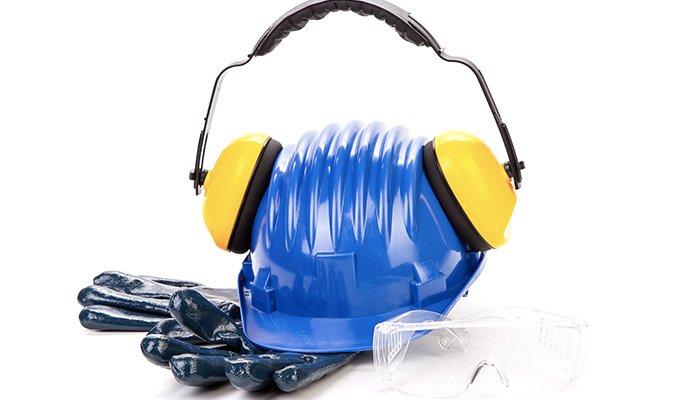
Safety Supplies: Essential Equipment for Every Industrial Workplace
Whether it’s manufacturing, logistics, or cold storage, all workplaces need certain equipment and safety supplies. A productive and comfortable environment relies on tools and machinery that are matched to the task and that feel safe to use. Since there is so much to outfit an industrial space with, creating a core list of the essentials eases the process and establishes the foundation for a functional space.
Industrial Safety Equipment Includes Loading and Lifting Machines
Plenty of shift responsibilities revolve around the use of forklifts and other loading machines. They’re staples for distribution, as well as for moving warehouse materials and construction safety supplies, yet, there is no “one size fits all.” Factors to consider include: aisle width, height restrictions, lift capacity, and whether the equipment will be used indoors, outdoors, or both. Fuel is another consideration. Gas-powered lifts require less maintenance than electric safety equipment, but you must have the space to safely store refills.
Telehandlers, also known as rough-terrain forklifts, are alternative options for heavy industrial work. They reach greater heights than traditional forklifts and have numerous attachments, such as pallet forks, to accomplish tasks. The horizontal boom feature is a great advantage for safely reaching materials, since regular forklifts only rise or descend vertically. If you choose to have telehandlers, check with your safety equipment wholesale suppliers about maintenance schedules, if they favor one brand over another, and if they offer a varied selection to fit changing needs.
Ladders Are Key Industrial Safety Products
Ladders are indispensable components of safety equipment in industry settings. When mechanical assistance isn’t necessary for safely reaching heights or depths for repairs, storage, or other duties, ladders are the clear choice. There are several different types to choose from, each designed for particular purposes.
Aluminum ladders are lightweight and easy to move around, yet durable enough to withstand rough handling like being tossed into truck beds or dropped on concrete floors. Weather-resistant fiberglass ladders are safe near power lines and last long a long time. It’s helpful to have a variety of step, mechanics, straight, and extension ladders on hand to accommodate the range of weights and statures of your workers. Platform stands and mechanics ladders are ideal for more than one person who needs to reach safety equipment and supplies.
The video, “OSHA: Ladder Safety Training,” features a comprehensive description of ladder types and purposes, and cites OSHA regulations pertaining to the definition of a ladder, required inspections, and safety guidelines to follow:
Keep the Proper Cutting Tools in Your Workplace Safety Supplies
It’s vital to eliminate dangerous metal blades from your facility wherever possible, as they increase the risk of hand injuries, which slow down productivity and lower morale. Cutting tools differ in application, so test safety knives in the field. You may find that box cutters are not always interchangeable with utility knives. Factors to consider include blade depth and angle, the composition of the material you’re cutting, and the shape of the handle in the case of hard-to-reach materials. Take a look at retraction mechanisms, too. Will your workers require a fixed-position blade for many cuts in quick succession, or can they opt for a safer auto-retractable or Smart-Retracting version?
When ordering cutting tools from your industrial safety products suppliers, take ergonomics into account as well. Prepetitive strain injuries take a long time to heal and result in a large amount of worker’s compensation claims. Make sure drills, chisels, axes, and power and manual saws fit comfortably in your employees’ workflows to protect against such injuries.
Basic Protective Products for Every Industrial Setting
According to a U.S. Department of Labor’s Bureau of Labor Statistics survey, most impact head injuries resulted from not wearing a hard hat. Although PPE needs may vary depending on what materials you employees handle, there are some universal pieces for all shifts. When on the job site, everyone—including non-labor personnel—should wear safety gear, such as hard hats, coveralls or vests, and slip-resistant, heavy-duty shoes or boots.
Evaluate your construction safety equipment suppliers to see who provides the best supplies for the materials being handled. These might include HVAC gloves, which provide maximum gripping and guard against abrasions, knee pads, masks or face shields, harnesses, and ear protection. In addition to personal wear, workplace safety supplies include the right bins for disposing of dangerous substances and debris, along with clearly visible warning signs and labels.
Practice These Industrial Safety Tips
Once everyone knows how to make safety a part of everyday routine, encourage them to employ these steps with safety equipment and their uses:
- Practice ergonomically correct movements when stepping on and off platforms
- Check that machine seating is adjustable for the driver’s comfort
- Keep all aisles, work areas, and doorways free of clutter, obstacles, and garbage
- Inspect all equipment before and after use, and immediately report any defects or damage
- Stay abreast of all changes or updates to industrial safety supply recommendations
Remember to Adapt Safety Equipment to Changes in the Workplace
Employees, warehouse space, and contracts with suppliers change. Prepare for revisions with regularly scheduled meetings to address questions or concerns. It’s also greatly beneficial to look over OSHA’s reviews of industrial safety supplies and equipment, such as its protocols for hand and power tools.
Download our Safe Cutting Paper to reduce workplace injuries

